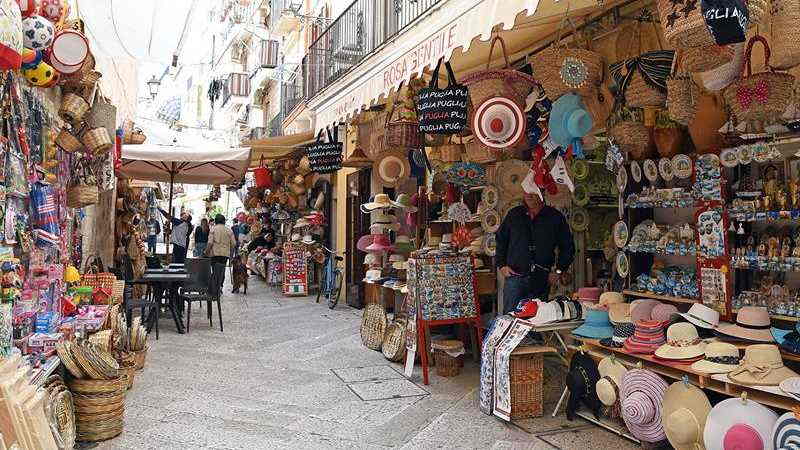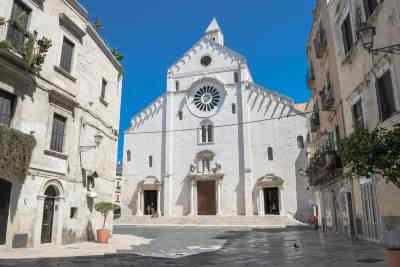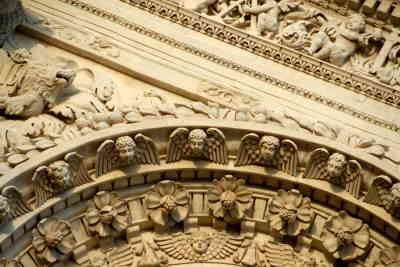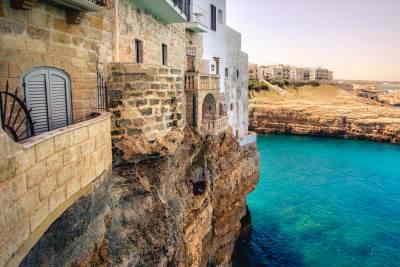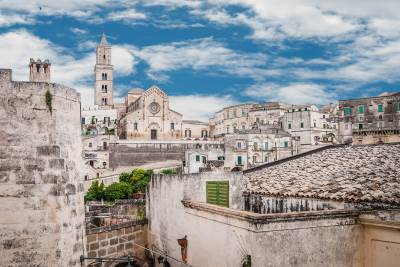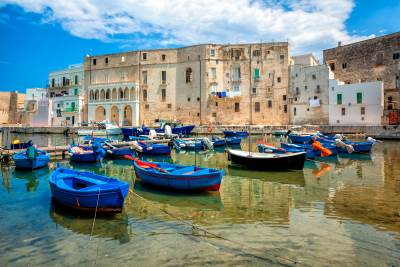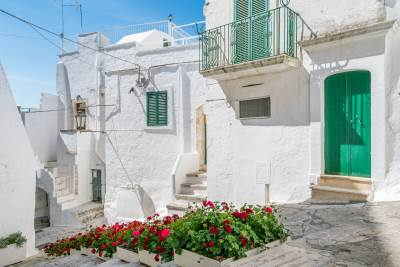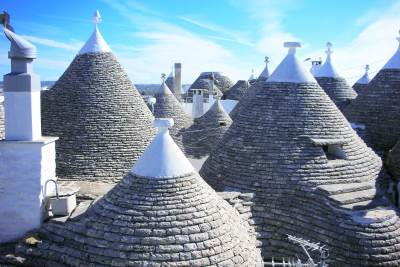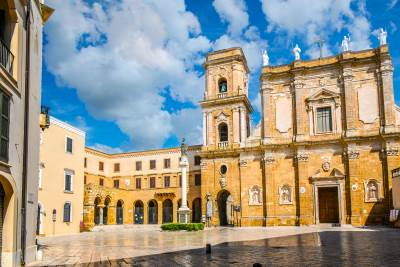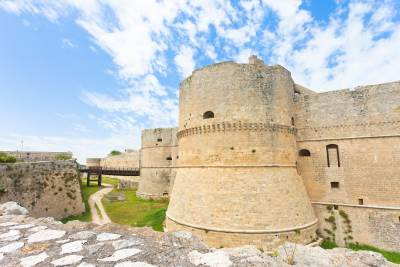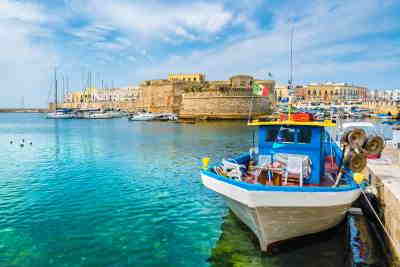Tour Bari

Italian Art Nouveau palazzi, amazing exhibition rooms and a unique theater, Puglian Romanesque style and architecture. A trip to Bari is something you won't regret: let the grandeur of the city surprise you!
Bari is one of the most beautiful cities in Puglia. The city is located along the Adriatic coast in the southeastern part of the Italian peninsula, across the sea from Dubrovnik, Croatia. With about 320,000 inhabitants Bari is the third biggest city of Southern Italy, after Naples and Palermo.
Bari has played an important economic role in the region due to its strategic location in the Mediterranean Sea and it place in important trade routes. Nowadays the city is still an economic and political center in Southern Italy. It hosts one of the most popular fair exhibitions and a large university focused on trade, economics and engineering.
The capital of Puglia is also known for a long and fascinating history that begins back in the pre-Roman age and for being a religious and tourist center that attracts several pilgrims and tourists from all over the world. Among other things, the city hosts an important opera house and is an important cruise ship harbor, being part of the cruise ship itinerary of the Mediterranean Sea.
The city’s port is also well connected by ferry with Croatia (Dubrovnik), Albania, Greece, and Montenegro. Its airport is one of the biggest in Southern Italy and welcomes several visitors coming from different European airports, such as London, Munich, Frankfurt or Paris.
OTHER PLACES TO SEE IN PUGLIA
![tour guide icon]()
TRIP TO BARI - WHAT TO SEE
On a guided tour, you will see the two faces of the city. First, you will visit the famous Murat quarter, with its elegant 19th Century theaters and majestic Art Nouveau palaces that date back to the French times of the city. Afterwards, you will explore picturesque old Bari, locally known as “Bari vecchia.” This part of the city is full of ancient traditions, colorful fish markets, narrow roads, and Medieval architecture.
During the guided tour, you will experience the elegant beauty of several Romanesque churches, above all the Basilica of St. Nicholas and the Cathedral of St. Sabino. While touring the old town, you will also see the beautiful Swabian castle, “Castello Svevo,” and the popular “via delle orecchiette,” where women make fresh pasta on the street every day.
BARI PRIVATE GUIDED TOURS - WHAT TO DO IN BARI
There is a popular saying in Bari, “Se Parigi avesse il mare sarebbe una piccola Bari” (If Paris had the sea, it would be a small Bari). This tells you a lot about the beauty of the city and how proud locals are. Furthermore, the “Baresi” are very hironic and are well known in the rest of the region for their strong character and ability to trade. As the trade history of the city, so its inhabitants.
Tourists tend to underestimate the beauty of Bari, usually using it for the airport or harbor services in order to reach other destinations of Puglia. For sure there are many great day trips from Bari, but Bari is much more than its logistics resources. Spending a day or a few days here will be an experience you won’t regret at all.
St. Nicholas Basilica: Bari must see
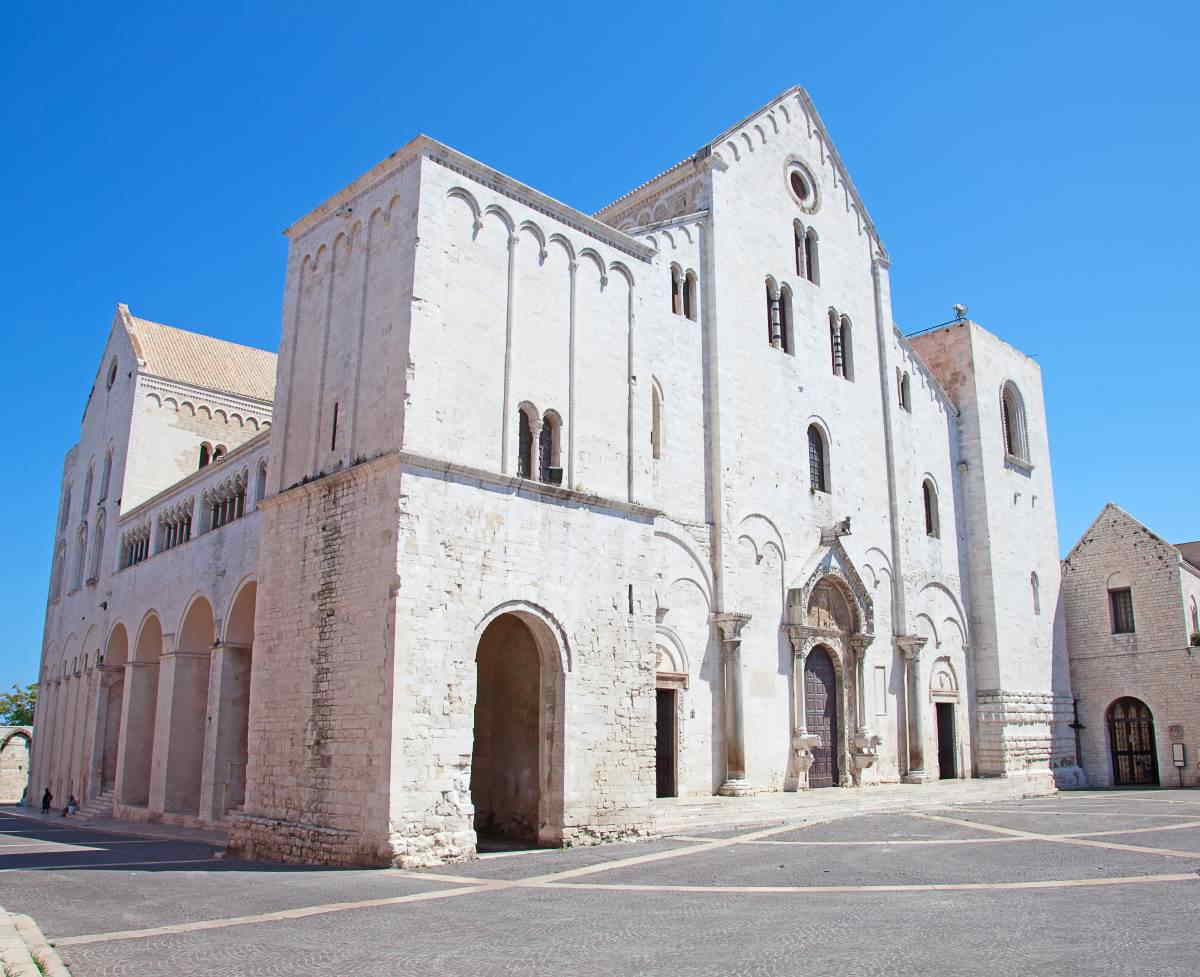
Located right in the heart of the city and surrounded by the sea and “Bari vecchia,” the Basilica of St. Nicholas, here known as “San Nicola,” is definitely the symbol of the city. The church was built at the end of the 11th and beginning of the 12th centuries - its style reflects the arts and architecture of that age: “Apulian Romanesque” style.
This took place during the “Norman” and “Swabian” age, an age historically known also as the “Crusaders age.” As you will experience on a guided tour of the Basilica, Bari and its religious center have been very influential during this period, in terms of arts, architecture and development.
St. Nicholas Basilica was the prototype of Apulian Romanesque architecture and has been used as a model to build new ones in the following years. In the church, you will discover several arts masterpieces and the relics of St. Nicholas, which are held in the tomb of the saint.
Bari vecchia
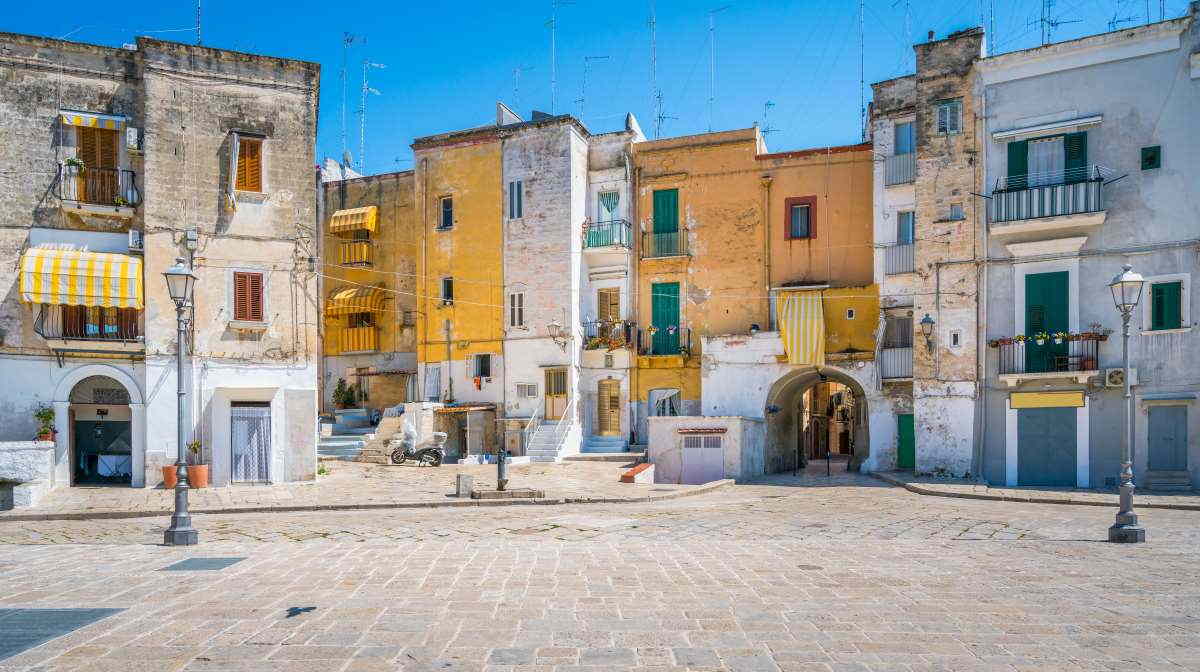
“Bari vecchia” (old Bari) is the most authentic part of the city, the soul and heart of Bari. Being the oldest part, it is full of fascinating arts and architecture, mostly from the Middle Ages, but you also will see some Roman artifacts.
With its maze of alleys and passageways and with the character of its inhabitants living there for generations, this quarter will surprise you positively. The old traditions and lifestyle of its inhabitants is still alive here and separated from the rest of the city.
Bari vecchia is like a big family, everybody know each other here and there is a great sense of belonging. They also have their own strong dialect, spoken just in that very quarter. If you know some Italian, don’t expect to understand the locals! Not even Italians can!
Piazza Ferrarese
Named after one of the most important merchant families of the city, the endearing and charming Piazza Ferrarese hosts part of the original path of the Roman way, ”via Traiana,” and an exclusive Puglian exhibition and shopping space, “Spazio Murat,” where you will find several design and boutique products that have been made by local artists.
The piazza overlooks the sea and has plenty of very nice caffetteria and restaurants. Furthermore, while here, don’t miss the “fortino Sant’Antonio,” a small fort from the Middle Ages that will afford you beautiful views over the Bari harbor. When there, you will have the chance to walk along the city walls facing the sea as well as the Lungomare.
Piazza mercantile
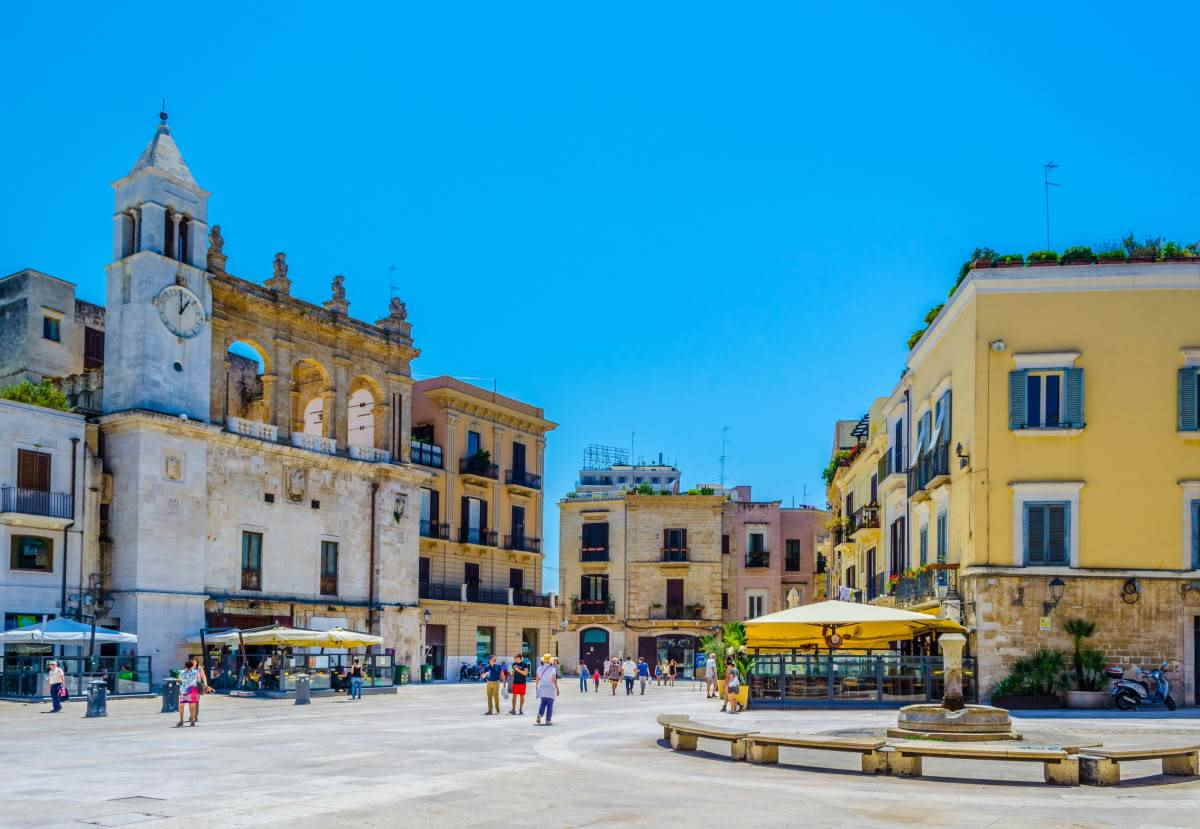
Located in the Medieval part of the city, Piazza del Mercantile used to be the heart of trade in the city, where the most powerful merchants families of Bari used to live. The piazza hosts the “column of justice” (also known as “colonna infame” - which stands for “The infamous Column”). The sculpture made out of a white limestone column and a stone lion (probably from Roman times) represents an old tradition used to expose insolvent debtors to public humiliation.
Cattedrale San Sabino
Saint Sabino Cathedral was built after the Basilica of St. Nicholas, another majestic example of elegant and austere Apulian Romanesque-style architecture. Within the Cathedral, you will see some Baroque details, such as the crypt. Beneath the Cathedral, you can visit the “Museo del Succorpo della Cattedrale.” Here you will discover Roman ruins and parts of an ancient Christian pre-existing basilica. If you’re passionate about history, this is a place you shouldn’t miss.
Swabian castle
Known as “Castello Svevo” (Swabian Castle) the castle has actually been remained several times during the norman, swabian, angevin and spanish domination. The majestic castle used to be located directly along the coast and facing the sea to deter the enemies to conquer the city in the arch of the many dangerous centuries. Nowadays there is a wide road separating the castle from the sea. In the outer and inner part of the fortress you will see the different military architectures and an exhibition room as well.
Murat quarter
The so-called “Murattiano” dates back to the French domination. In Napoleon’s time, Joachim Murat, King of Naples, choosed Bari as new political center of the region. At that time, the city experienced a big boost in urban development in the areas surrounding the old city: the Murat quarter. While walking in this quarter, you will discover beautiful Art Nouveau palazzi that date back to the French times. Furthermore, you will find the shopping allee of Bari, “via Sparano,” and several classy caffé and restaurants. You’ll be surprised by the strong difference between old Bari and the new part. You will feel like being in two different cities.
Bari Lungomare seafront
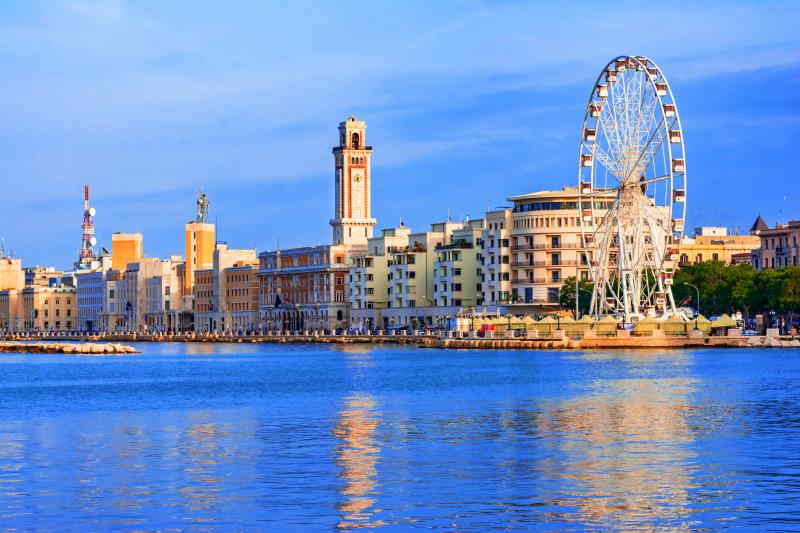
With its about 7 kilometer long sea promenade, known here as “lungomare,” Bari is one of the most vibrant and beautiful cities to walk along the sea. That is what locals love. Especially in the morning or over the weekends, you will see a lot of Baresi walking along the sea promenade for their usual “passeggiata” - walking, chatting, enjoying the sun, admiring the sea ,and maybe tasting a fresh gelato.
Here you can experience the famous beach of Bari, "Pane e Pomodoro," the only beach located directly in the city. Along the sea promenade, you will also find a very typical fish market in the morning, where you will see fishermen selling their fresh seafood or just coming back from fishing. In the southern part of the Lungomare you will see majestic Palazzi, which mostly date back to the mid-20th century, nowadays seats of main institutions such as “Palazzo della Provincia” or seat of “Carabinieri.”
Along the Lungomare is also located the “Pinacoteca Provinciale,” an amazing gallery that hosts different arts masterpieces from artists like Tintoretto and Paolo Veronese. Last but not least, the beautiful Teatro Margherita, an exhibition space and old theater built above the sea.
Teatro Petruzzelli
The majestic Teatro Petruzzelli is one of the symbols of Bari and one of the most important theaters of the Italian peninsula. It is the fourth largest in the country and is famous for its beautiful architecture. It was first built at the beginning of 20th century and was destroyed in 1991 because of a fire. After years of reconstruction, it was acquired by the city of Bari. It is used for opera and ballet. If you’re staying in Bari for a few days, you should definitely check the cultural events of those days to experience the grandeur of this city.
Food tips - Visit Bari like a local
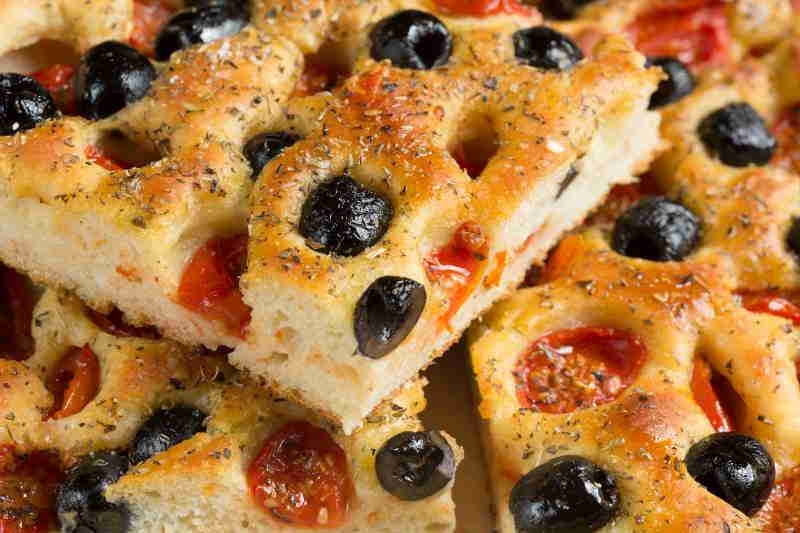
If you’re a foodie, Bari is the perfect destination. While in the city, you will see several “panificio” and “focacceria” that sell the typical “focaccia barese,” a focaccia bread that is fresh baked every day and is covered with tomatoes, olive oil, and oregano. This is the most beloved “fast food” by the locals and has gained a big reputation over the years.
Due to its position along the sea, you won’t be surprised that seafood is a big item. Baresi eat raw seafood in the morning (you might see some locals doing it at the fish market in the morning). Among the the seafood, octopus is one of the most traditional. You can also ask for a “panino con il polpo” (octopus panini) in the summertime. You might see some fishermen while beating the octopus in the morning; they beat them in order to break the nerves so that it is better to cook and eat.
While in Bari vecchia, you will also see the so-called “via delle orecchiette,” a typical road where many “mamma” and “nonna” of Bari make fresh pasta every day, especially the “orecchiette” - the typical pasta distinctive to Bari and Puglia. The pasta is usually served with anchovies and broccoli rabe in the winter and with fresh tomatoes and fresh ricotta cheese in the summertime.
EASY TO COMBINE WITH:
OUR SERVICES:
CELEBRATIONS:

St. Nicholas Celebrations, 6-9th of May every year
Day trip to Alberobello from Bari
If you are spending your holidays in Bari, and are interested in seeing the rest of Puglia there are many day trips you can do from Bari. Definitely a visit worth: Alberobello. The town and its UNESCO World Heritage Site, the unique Trulli are definitely a place to see when in Southern Italy. The site is among the most beautiful places of Puglia and is just about 50 driving minutes away from Bari. Want to discover the Trulli area of Puglia region on a private tour with a personal guide? Ask us for a private day tour to Alberobello and we will provide you a very personalized service. A private driver will pick you up from your accommodation, harbour or airport and drive you to the so called “Trulli Valley” to discover the breathtaking landscape. A private english speaking local guide will show you the best corners of the land and explain the history and architecture of the typical stone dwelling with conical roof.
Day trip from Bari to Matera
If you are staying in Bari for a few days or maybe for just one day you can not miss the chance to visit one of the most authentic sites of Southern Italy, a UNESCO world heritage site since 1993 and european capital of culture 2019: the city of Matera. In order to reach Matera from Bari it just takes about 50 minutes driving - a private driver and tour guide will show you the unique beauty of one of the oldest cities of the world. In Matera we also offer other excursions such as walking and hiking tours in the nature.
Wine tour from Bari
Are you interested in a wine tour in the Bari area? We can arrange a private half day wine tour to one of best wineries of Puglia. The family run wine company is located in Gioia del Colle, about 40 driving minutes away from Bari. A private driver will pick you up in the morning or in the afternoon and drive you to Polvanera winery. Here you will visit the winery, learn about the winemaking process and terroir, learn about the history of one the most representative wines of Puglia, the “Primitivo” and have an amazing tasting of different white, rosè and red wines - according to your personal tastes.
